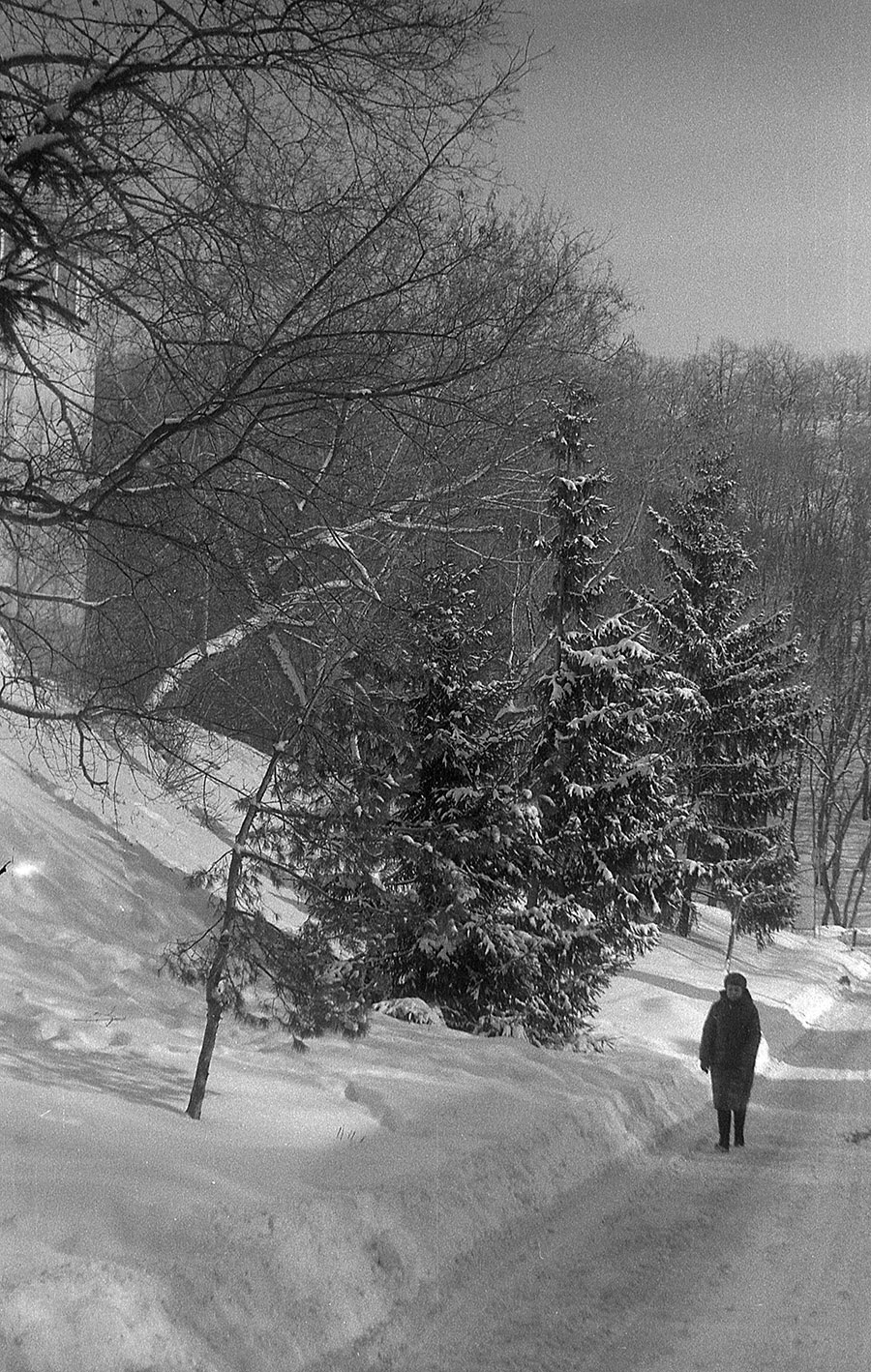Sport
Sport is a Soviet SLR camera, designed for 35 mm film. It is considered one of the world’s first small-format cameras of this type.

An experimental batch of Sport cameras was released in 1934. Serial production was launched at the GOMZ plant in Leningrad and lasted from 1937 to 1941.
Sport Specifications
- Type: 35mm SLR camera
- Manufacturer: GOMZ plant
- Production period: 1935-1941
- Format: 24x36cm on 135 film
- Lens mount: bayonet mount
- Lens: Industar-10 f3.5/50
- Shutter: focal-plane shutter with speeds from 1/25 to 1/500 sec.
- Viewfinder: SLR with non-removable pentaprism
- Lighmeter: none
- Flash synchronisation: none
- Selftimer: none
- Weight: 820 grams
Over the entire production period, about 19000 copies of the Sport camera were released. As you can imagine, this is a fairly small number, and if you take into account the age of these cameras, you can understand that nowadays it is quite difficult to find a Sport camera in good condition and for reasonable money.

The Sport camera was equipped with an Industar-10 3.5/50 lens with an original bayonet mount. Interchangeable optics were unambiguously assumed, but nothing is known about the existence of specific samples.


The shutter consists of two metal lamellae. The lamellas move along the short side of the frame. The shutter has speeds of 1/25, 1/50, 1/100, 1/200, 1/500 (for some 1/300), and manual B.
The camera uses a 35 mm perforated film. The frame size is 24×36 mm. The film is charged in non-standard cartridges and one charge allows to make 50 frames. The film is rewound from the feeding cassette to the receiving one. Rewinding is not provided.

Unlike modern SLR cameras, the mirror of the Sport camera does not lower automatically, that is, after you cocked the shutter and took a picture, the mirror closes, and you need to cock the shutter again to lower the mirror.
Through the mirror viewfinder, it is possible to sight only if the shutter is cocked. Exactly the same principle was applied in early versions of Zenit cameras.
The camera does not have a self-timer, sync contact, and shoe for attaching additional devices.
Almost all the controls of the device are concentrated in the multifunction knob on the right panel (about the same as on Kiev rangefinder cameras). The knob is responsible for cocking the shutter, moving the film, and for changing the shutter speeds.



The Sport camera has a rather unusual design. It is very compact, and the mirror is in a very unusual place. The camera is very convenient, but unusual to use.
The lens is made according to the type of Contax and Kiev rangefinder cameras, that is, the helicoid is located in the camera itself.
The shutter button is located on the front panel and has a socket for the shutter release cable.


The viewfinder is quite unusual, and you need to look from top to bottom into it. The picture is quite clean and bright, especially for 35mm cameras of the 1930s. But due to the lack of pentaprism, the image is mirrored from left to right.
Conclusion
Like all inventions that were made before the appearance of the common standard, the Sport camera looks very peculiar and charismatic.
But as we said before, due to the fact that Sport cameras were created in very small numbers, they are very difficult to find in good condition and at a low price. But the team of Sovietcameras.org believes that this is a worthy instance for any collection.
SPORT PHOTOS























Several comments – the mirror is not “sticky”. In common with all early SLRs (until the Pentaflex) the mirror is a “non-return” mirror.
There is some evidence that series production started in 1936. (A Sport with lens number 8855 had been given as a present to a GOMZ employee in 1936 – engraved on a special plate fixed to the rear of the camera)
The mirror on the Sport is very much in the usual place for any SLR – between the lens and the film plane and below the focusing screen.